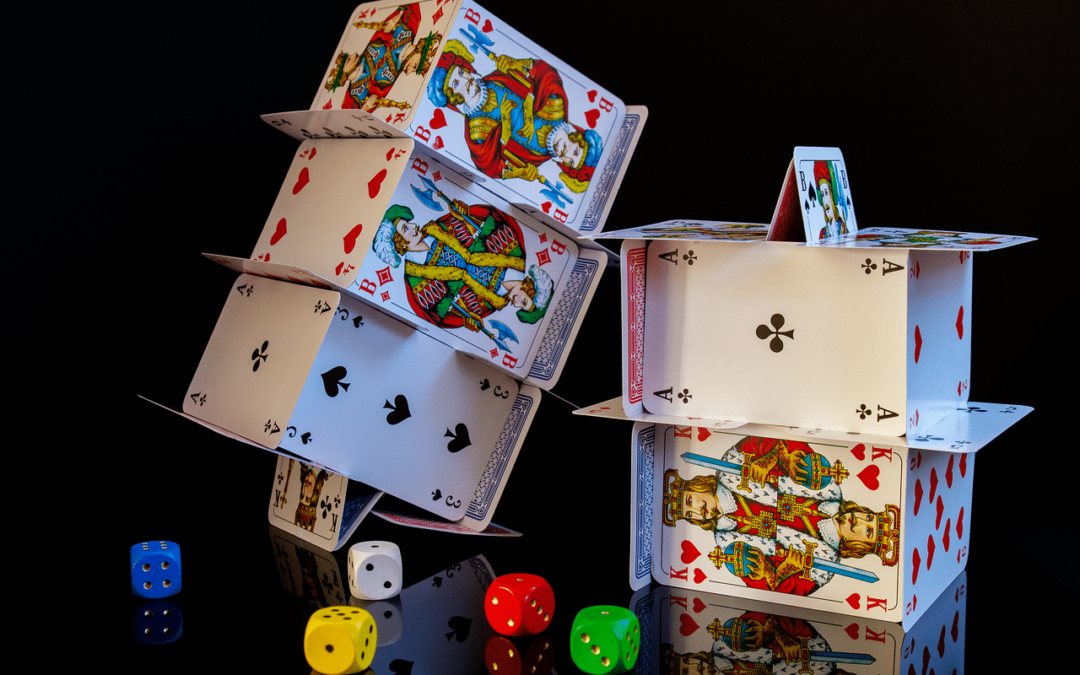Spending time with your family can often feel like concession.
Everyone has their own interests, so when you all get together to do something, there’s a good chance that at least half of you are pretending to enjoy yourselves.
Whether your wife has a specific show she likes, your son is glued to his phone or your daughter would trade all of you in for a new book, keeping everyone happy can be hard.
Luckily for all of you, there’s the game of cards.
While the concept might initially seem boring to the kids, there are certain games that can rope in even the most skeptical player. Within a few turns, they’ll be fighting back beads of sweat, staring each other down and finding it impossible not to have fun.
But which card games can have this effect?
Look no further, for we have compiled a list of the very best card games you play with your family.
Top 6 Best Card Games You Can Play with Your Family
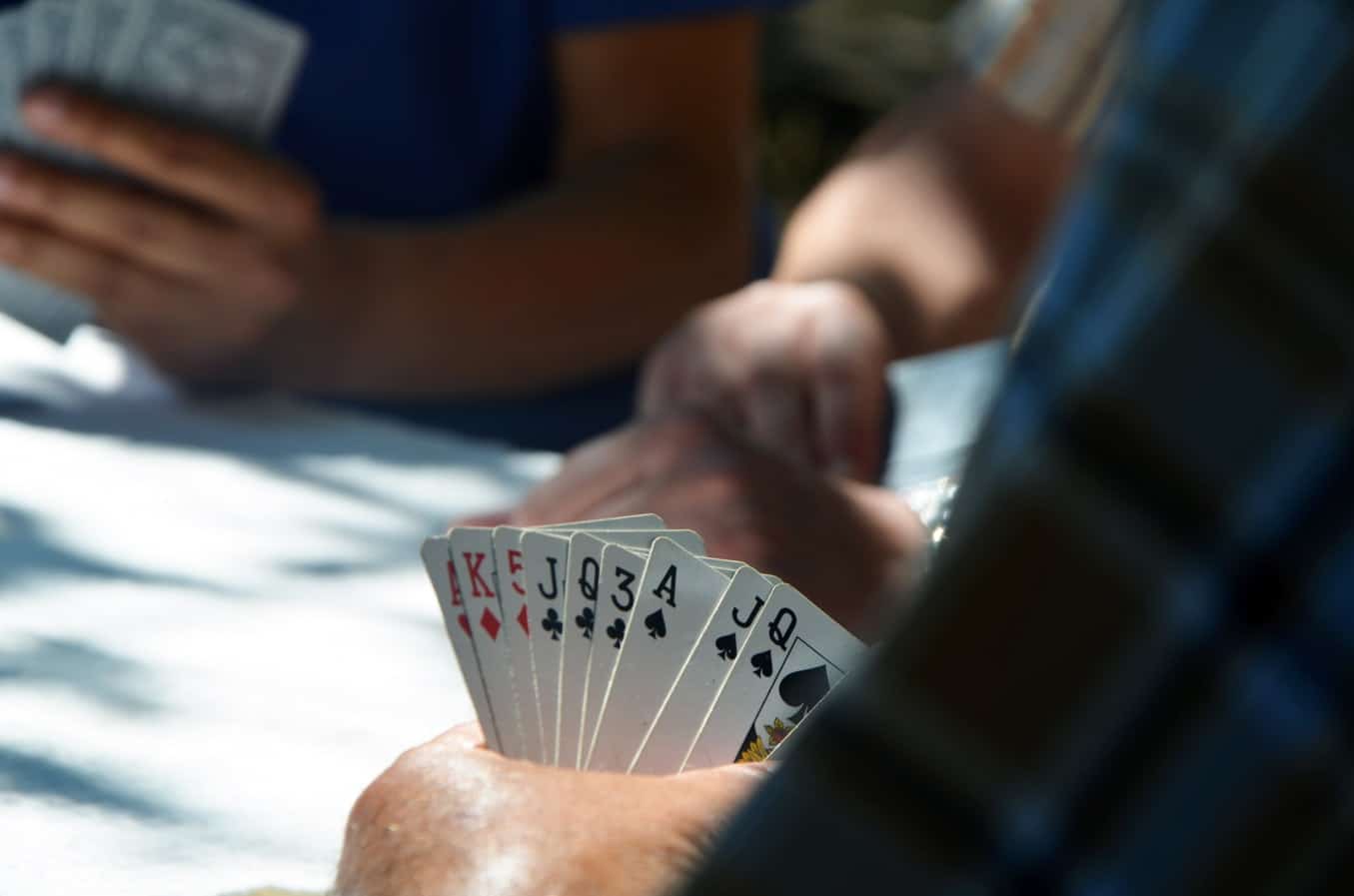
After applying our rating system to the many, many card games that currently exist, we’ve ended up with this list of games. They are ordered from best to worst.
1. Crazy Eights
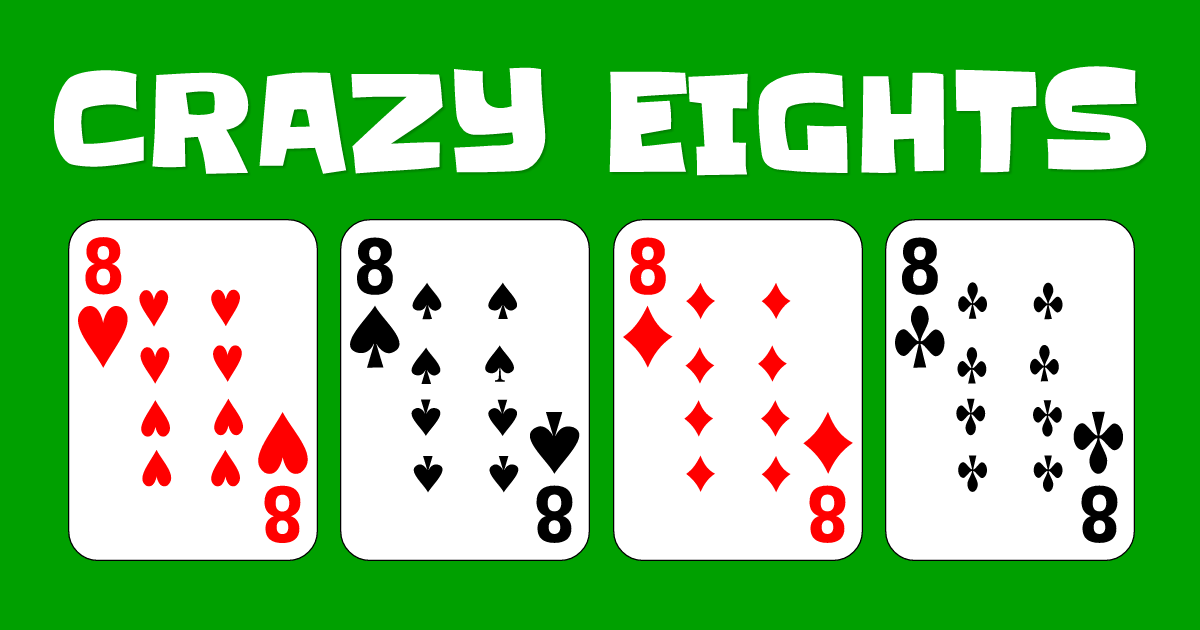
Image Source: cardgames
Crazy Eights isthe ideal game for families, because it offers a little something for everyone. For the adults, there’s enough skill, strategy and plain old luck involved to keep the game intellectually interesting. For the kids, the rules are simple enough to understand and the added element of luck can keep them in the game.
The game involves dealing each player eight cards, or seven, according to some. The first player to get rid of all their cards is the winner. But how do you get rid of your cards? After the players have their hands, put the deck down and flip up the top card. Based on what the top card is, players can play a card of the same suit or same number.
The player can also play a 2, which will force the next player in the rotation to draw two cards, or a 3, which will force the next player in the rotation to skip his or her turn. If a player has an 8, he or she can play it at any time and decide what suit it will act as, regardless of its actual suit.
2. Battle
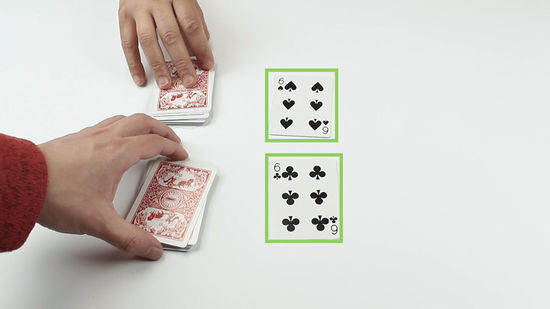
Image Source: wikihow
Also known as War, Battle is one of the simplest card games out there – if not the simplest. Because of this, it’s immensely accessible to even the youngest children. This makes Battle a perfect gateway game to get children interested in cards as a source of entertainment.
To play the game, the deck is divided equally between players. Players holds their deck face down, draw the top card and play it. If it is higher in numerical value than the other player’s card, they take both cards and add them to their collection. When the player runs out of cards in his or her deck, the player takes the cards he or she has won, shuffles them and resumes play. The first player to collect all the cards is the winner.
If two players play a card of the same numerical value, then the stakes are raised considerably. The players then draw two cards and lay them face down, then they draw a third, which is laid face up. Whoever has the highest card takes all of the cards in play, including the original two, the cards that were laid face down and the third cards that were played. If the third cards are also equal, then repeat this process.
3. Go Fish
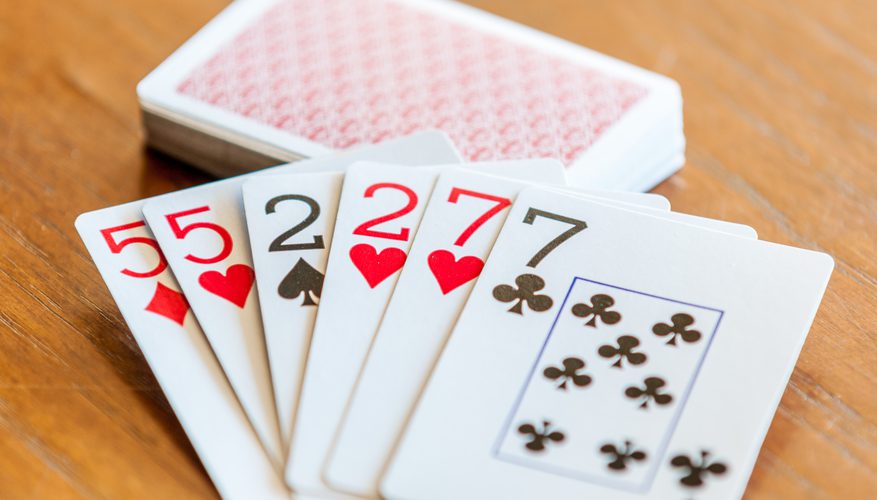
Image Source: ourpastimes
This is, perhaps, the most famous of all family-based card games. The reason is because, like Battle, Go Fish is easy to pick up. However, unlike Battle, Go Fish isn’t purely based on luck. There is some skill involved, although not enough to frustrate younger players.
Each player is given seven cards and the rest of the deck is placed face-down. The goal of the game is to get rid of the cards in your hand. The player does so by finding pairs for the cards in his or her hand. Upon receiving your hand, the player can go ahead and take out any pairs he or she is lucky enough to have received.
From there, each player’s turn consists of looking for pairs by asking the other player for a specific card. If the other player or players have the card, they must hand it over. If the other player doesn’t have the card, then the player must draw a card from the deck. If the player is lucky enough to draw a card that makes a pair with another in his or her hand, then the player may add them to his or her pairs.
When all of the cards are gone and made into pairs, the players count up their collection. Whoever has the most pairs is declared the winner..
4. Rolling Stone
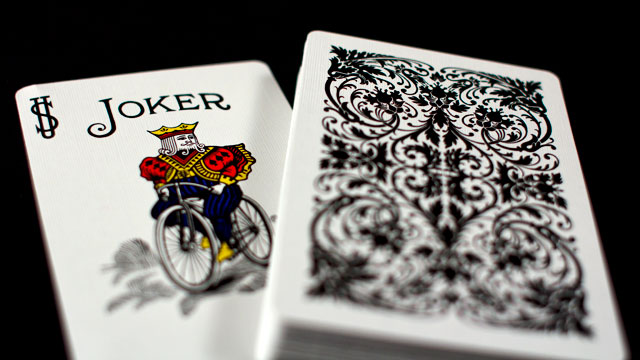
Image Source: bicyclecards
Rolling Stone is slightly more complex than the games on this list. This makes it more intellectually interesting for adults, but without leaving the kids behind. It’s still simple enough to learn rather quickly and, in the spirit of its name, becomes progressively intense, which can result in a lot of fun.
Depending on how many players are involved, different cards are removed from the deck. For four players, cards that are six or lower are removed. For five players, cards that are four or lower are removed. For six players, only the twos are removed. After this is done, each player gets eight cards.
The first player can play any card. Then, the players that follow must play a card of the same suit. If a player cannot play a card of the same suit, the player must collect all of the cards that have been played up to that point. When this happens, the round ends. A new round begins with the player who just collected all of the cards playing any card he or she wishes.
If a round goes by and every player is able to play a card of the same suit, then all of the cards played up to that point are removed from the game. Whoever played the highest card gets to begin the next round by playing any card of his or her choice. The winner is whoever can get rid of their cards first.
5. Play or Pay
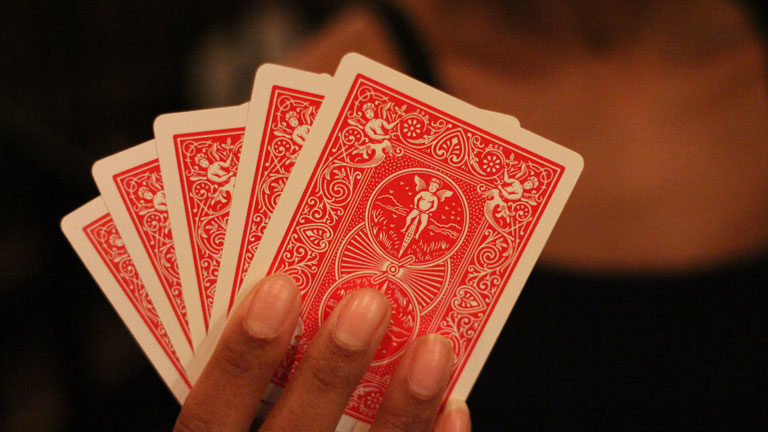
Image Source: bicyclecards
Play or Pay has a high likelihood of entrances everyone in the family for one reason: gambling. Unique to the other games in this list, Play or Pay provides opportunity to win some money. Of course, the game can be played with nickels and dimes, candy or whatever else is best suited for your family.
At its core, the game is quite simple. The entire deck is dealt out to the players, one card at a time. The first player plays whatever card he or she wants. From there, the next player must play another card of the same suit in descending order. For instance, if the first player plays a jack of hearts, the next player must play a ten of hearts. Once a player plays an ace, which is considered a one, then the order circles back to the top, so a king must be played next.
If a player is unable to play a card of the same suit in descending order, he or she must ante up a chip (or whatever you’re using as currency) and it’s the next player’s turn. Whoever plays the final card in a sequence gets to play an extra card by starting the next suit sequence. The winner is decided by whoever is first to get ride of all their cards.
6. Slapjack
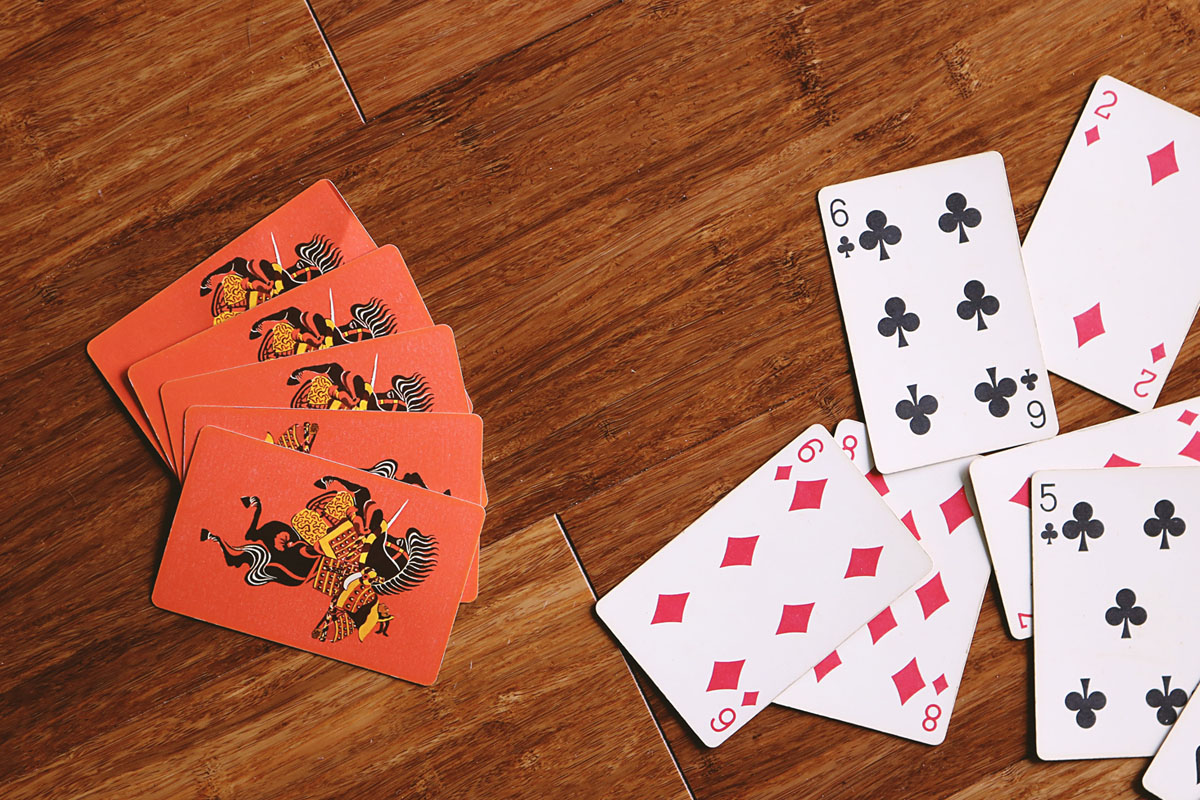
Image Source: cardgameinfo
Among card games, Slapjack in unique. This is because there’s a physical element to the game, which makes this game – perhaps, even more so than Battle and Go Fish – attractive to younger children. On the flipside, adults might find this game to be more infuriating than fun, which is why it’s placed at the bottom of the list.
Each player is dealt a card until the deck is completely gone, but the players keep their individual decks face-down. In a rotation, the players take the top card from their deck and play it face-up in front of everyone. They continue to do this in a rotation until a jack is played. This is where the name of the game begins to make sense.
When a jack is played, the aim of the game is to slap the jack before anyone else. Whoever has his or her hand on the jack first gets all the cards that have been played before the jack. Those cards are added to his or her deck.
If a player runs out of cards, he or she has one more chance to stay in the game. If he or she isn’t the first to slap the next jack, then that player is booted from the game. Whoever is the last player with cards is the winner.
How We Choose Our Ratings
These games were chosen based on a few different qualifying factors. To be considered at all, the games must have some level of popularity. Because a deck of 52 cards of four different suits provide innumerable possibilities when it comes to creating games, it would have been easy to become lost in the weeds of obscure card games.
Next, the games’ accessibility was considered. This aspect was given precedence over the other factors, because of the need to involve everyone in the family, including the youngest of children. While Texas Hold ‘em might be the most fun game for adults, it can frustrate younger children, both because of the rules and the fact that they’ll probably be in a perpetual state of losing. In order to keep a level playing field between adults and children, the games must also exhibit a mix of skill and luck.
The final consideration was the fun-factor and cleverness of the game itself. For this reason, Slapjack was placed at the bottom of the list. While anticipation and a strong physical element might be attractive to younger children, adults could find the game unengaging. Crazy Eights was placed at the top of the list based on its clever design and accessibility, which can keep adults and children equally interested.
Buyer’s Guide
All of these games can be played with a standard 52-card deck, so you won’t have to spend extra money on any extra parts.
However, if your kids are turned off by a plain deck of cards, some of these games have been slightly modified into more aesthetically pleasing products. For instance, the popular game, Uno, is essentially Crazy Eights, albeit with colorful cards. There are other minor differences, such as there being more cards and some cards with unique effects, but it’s ultimately the same game.
Some of the other games on this list also have licensed alternative, but because these games are more expensive than a simple deck of cards, they’re only recommended if you have kids who will not engage with anything that isn’t drenched in primary colors. If you have older kids, a regular deck of cards should do just fine.
The Family That Plays Together, Stays Together


